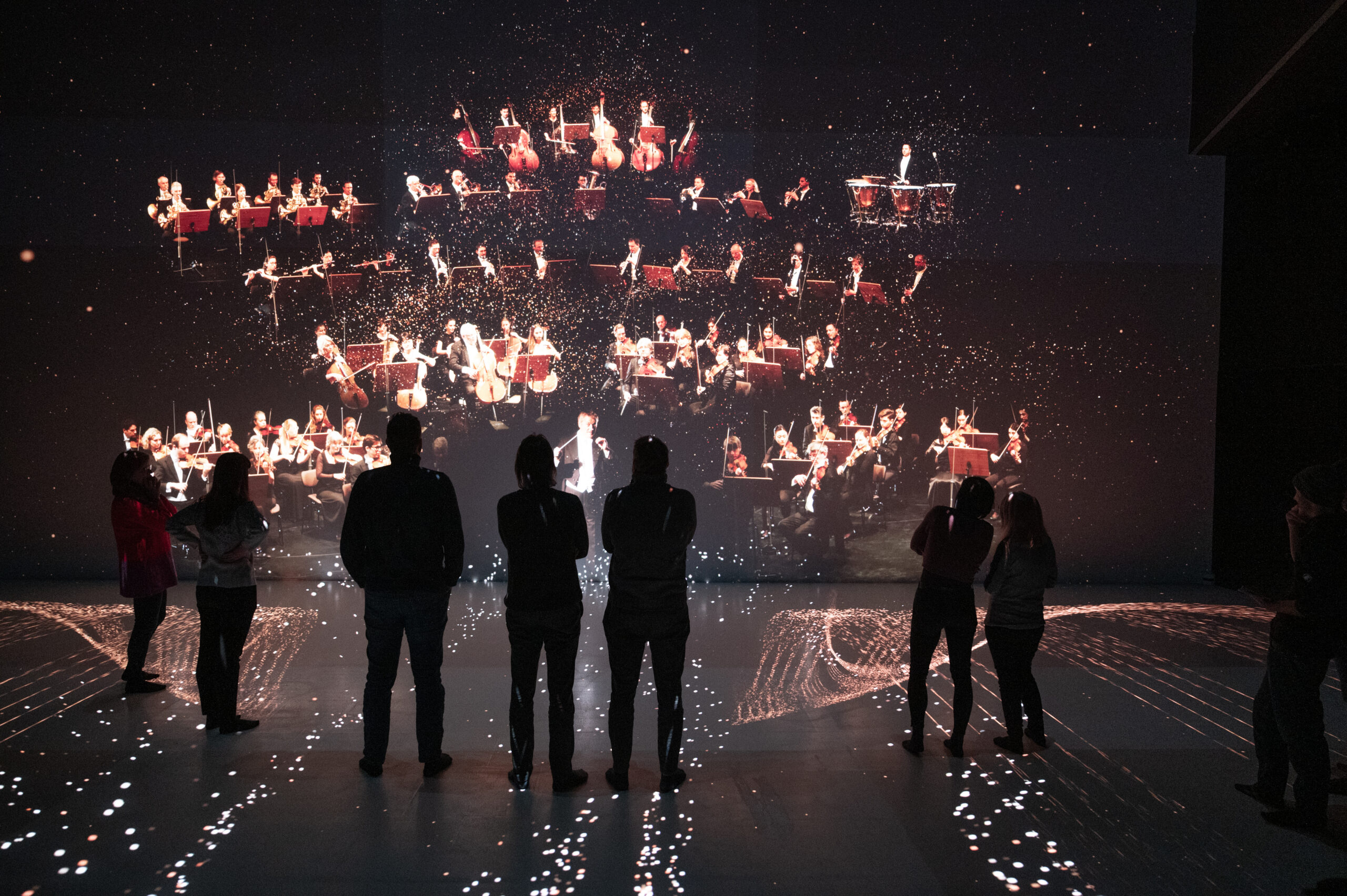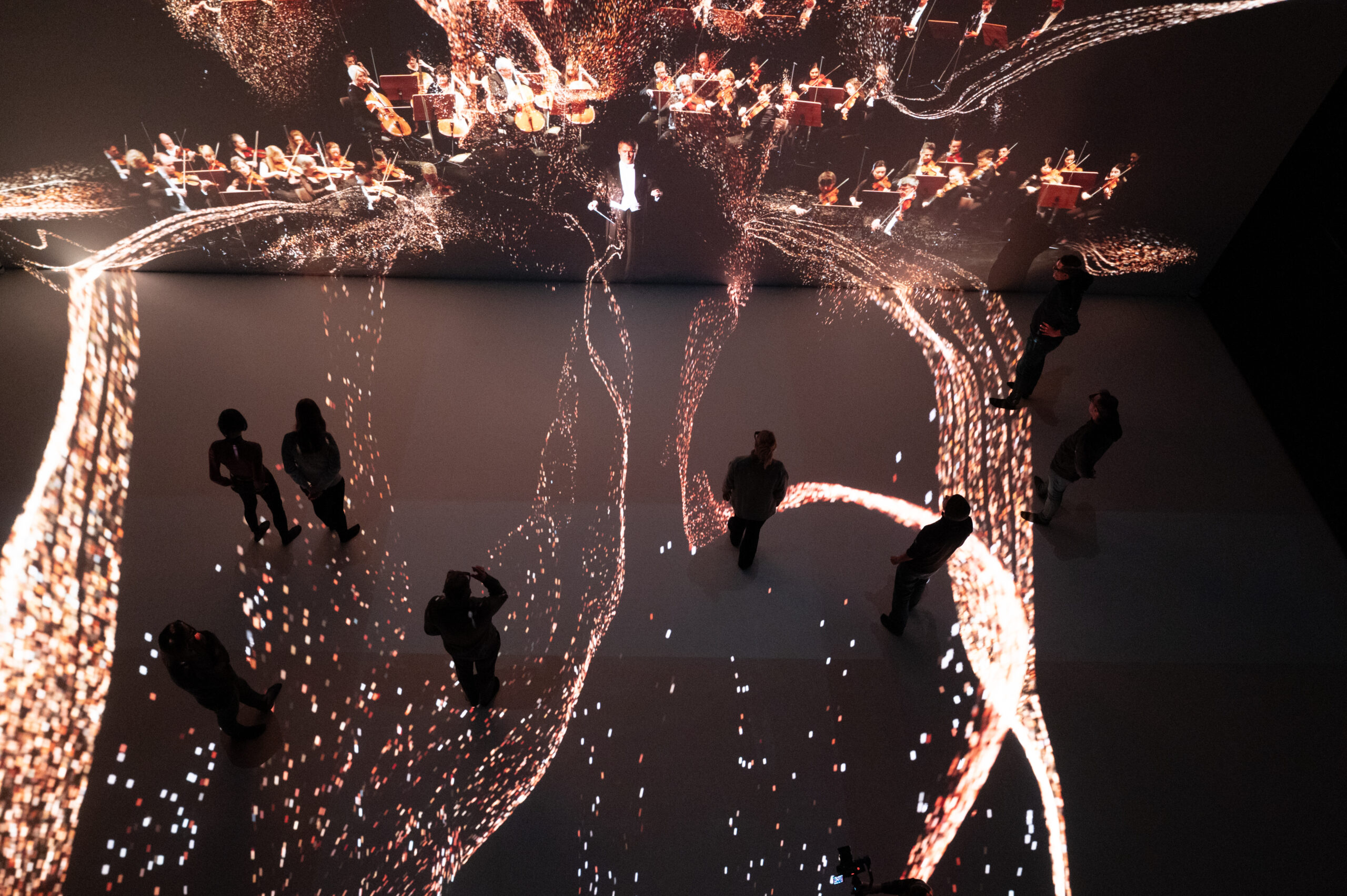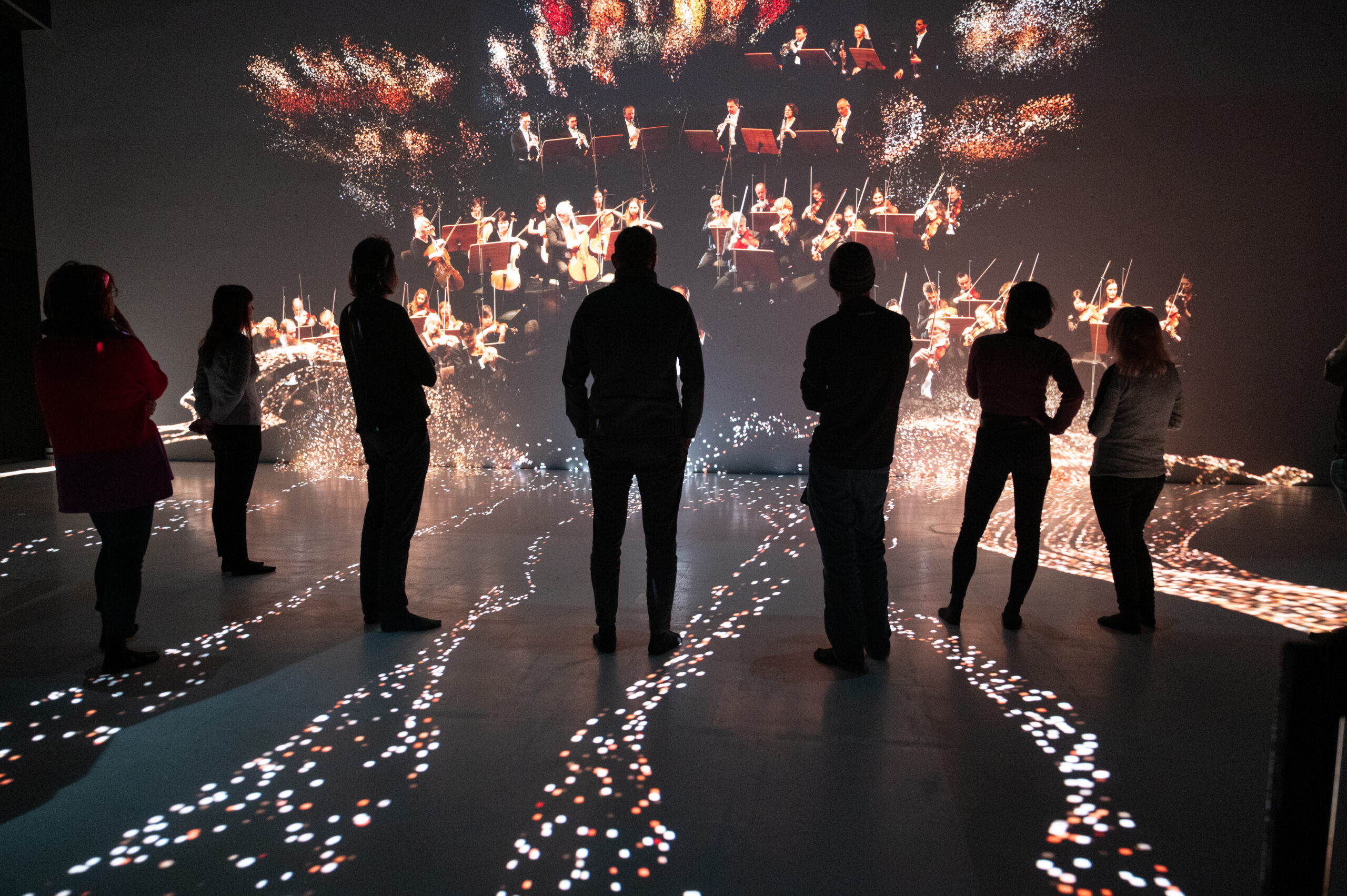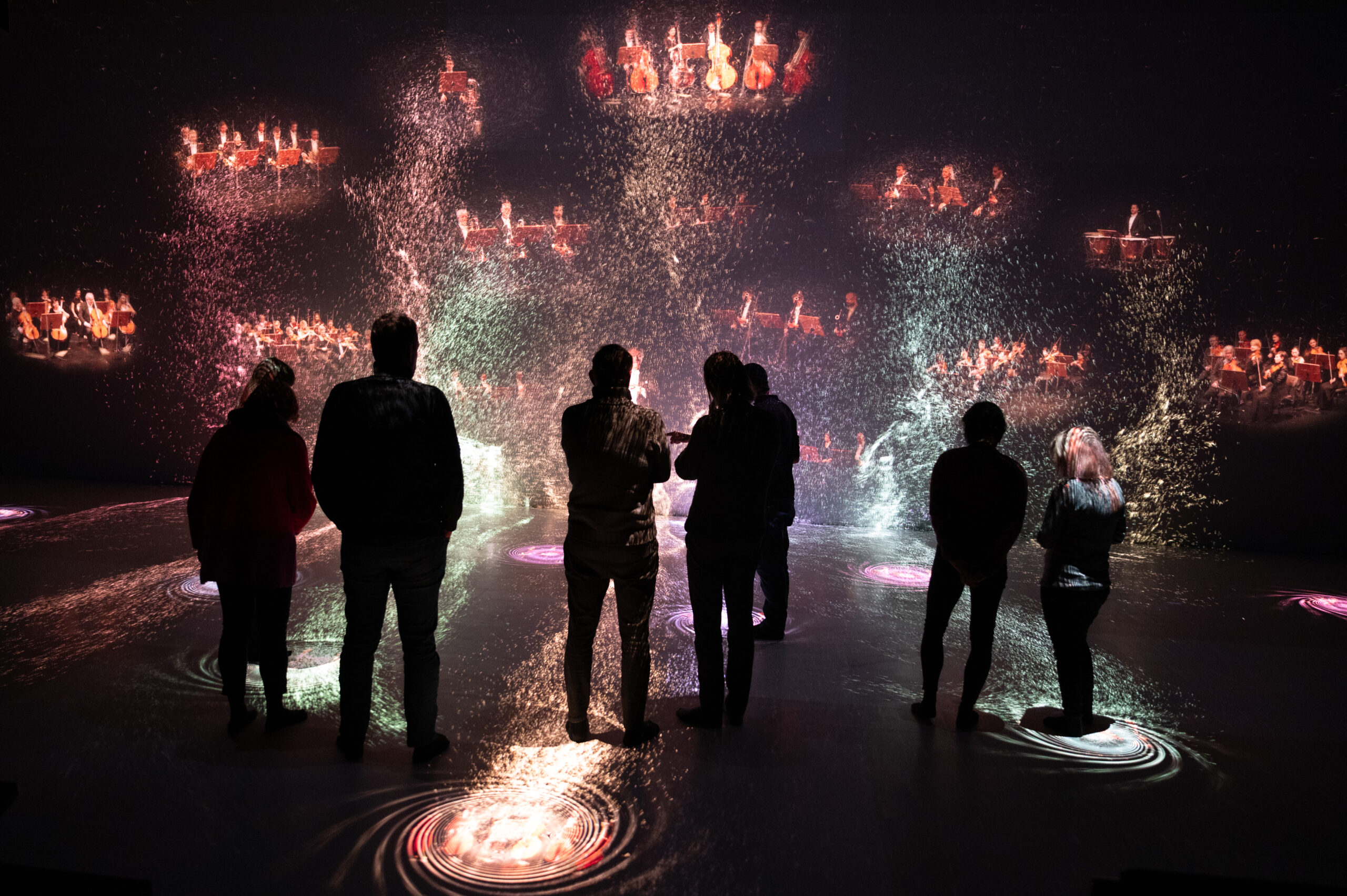Upper Austria celebrates 200 years of Anton Bruckner in 2024. From February, you can experience the world of the famous composer in an unprecedented way at the Ars Electronica Centre!
Anton Bruckner was born in Ansfelden in Upper Austria in 1824. He was musically influenced, encouraged and trained at the monastery in the neighbouring town of St. Florian. In Linz, he became a celebrated organ improviser and composer with a unique musical language. Today, his works can be heard in the renowned concert hall named after him in Linz, are performed by an orchestra dedicated to him and his music is taught and researched at a university that also bears his name.
The 200th anniversary of his birth in 2024 offers a welcome opportunity to engage with this exceptional composer in numerous concerts, exhibitions and participatory projects throughout Upper Austria. The province of Upper Austria, the city of Linz and institutions from the fields of culture, church, business and tourism are preparing for this special anniversary year.

Being Anton & Playing Anton
Ars Electronica, which organised a “symphonic open-air with Bruckner’s 8th” as a “central multiquadrophonic music event” in the Danube Park as part of the first Klangwolke in 1979, and broadcast its music to the whole city via the radio receivers of the people of Linz, is also continuing this tradition and continuing the musical Bruckner experiment in 2024. Together with the Bruckner Orchestra Linz, the Ars Electronica Futurelab team has created two impressive Bruckner experience worlds for visitors to the Ars Electronica Center.
With Being Anton, a new immersive sound space awaits in the exhibition rooms of the Ars Electronica Centre, which leads into the world of thought and spirit of Bruckner and his contemporaries.
At Playing Anton, you are not just a listener, but become part of the orchestra itself – right in the centre of Deep Space 8K. State-of-the-art interaction technology makes it possible to redesign the various voice groups of the Bruckner Orchestra Linz together with others and to experience the musical and compositional aspects of Bruckner’s music as impressive 3D visualisations.
From February, you will be able to experience Bruckner’s music and the world of sound that surrounded him at the time in an unprecedented immersive way. In close collaboration with Norbert Trawöger, Artistic Director of the Bruckner Orchestra Linz, who was entrusted with the artistic direction of the first Upper Austrian KulturExpo “Anton Bruckner 2024” by the province of Upper Austria, two fascinating examples have been created with Being Anton and Playing Anton, in which human creativity and the latest technologies come together in an outstanding way. Key Researcher & Artist Ali Nikrang and Senior Researcher & Artist Arno Deutschbauer from the Ars Electronica Futurelab played a leading role in the realisation of the two projects, and we asked them to talk to us together with Norbert Trawöger – the expert on Bruckner’s life and work.
How do you get a young audience excited about Bruckner in 2024?
Norbert Trawöger: Enthusiasm demands inspiring experiences. I fully understand that young people do not feel the urgent need to surrender themselves to an 80-minute symphony. Therefore, we have to create cleverly dosed approaches and adequate spaces that make these experiences possible. The Ars Electronica Centre is full of these possibilities and in 2024 you can also be playfully gripped by Bruckner’s music here. How marvellous!
At Playing Anton, the visitors themselves become part of the orchestra. How can visitors interact with the orchestra?
Ali Nikrang: Visitors have the opportunity to interactively control the individual music groups of the Bruckner Orchestra Linz, 14 in total. By positioning in the room, it is possible to have groups of musicians play together or individually and thus generate a completely new listening experience of the Bruckner Orchestra Linz.
Arno Deutschbauer: The multi-user application for the Deep Space 8K thus allows a variety of possible combinations for the sounds of the orchestra and their interaction and enables a new kind of collaborative orchestral sound.
You will be able to hear Bruckner’s 9th Symphony. Why was this work chosen?
Norbert Trawöger: The Scherzo of the Ninth is full of a dance-like percussive force that is hard to resist. This “machine music” grooves, captures you physically, which creates immediate access. Sensual experiences are unbeatable anyway!
What considerations went into the design of the 3D visualisations in order to convey Bruckner’s unique soundscapes in the best possible way?
Ali Nikrang: The musicians in the orchestra are projected onto the wall. The image always consists of the people who are actively playing – depending on the corresponding positions of the audience on the floor. Visual effects also reinforce the perception of the music. The idea is to show visually that an orchestral sound consists of more than just the sum of its individual parts.
Arno Deutschbauer: The positions of the audience are linked to the individual instruments in the wall projection by the particle waves of the floor projection. Each instrument, each group of instruments is represented by different colours and shapes, so that the acoustic combination of the instruments creates a completely new image.
Being Anton takes visitors back to the time of Anton Bruckner. Why is this essential in the context of Bruckner?
Norbert Trawöger: A contextual immersion in the historical time frame and its acoustic environment can help us to become more curious, more understanding. Knowledge can be a trampoline to sharpen our ears even more for the magic of the work of art. When we land in amazement, we have long since lost our heads. Amazement is unthinkable, it is a physical process.
What specific elements were integrated into this immersive sound space in order to authentically convey the living environment and sounds that Bruckner encountered?
Arno Deutschbauer: The conceptual idea includes three elementary sound worlds that are intended to contextualise Anton Bruckner as a person and composer. His time as an adolescent composer in Ansfelden and St. Florian, his time in Vienna as a composer and, for example, the technological advances that took place at the same time, as well as excerpts of his compositions to match. An audio play with various excerpts from his life is also realised to this end.
We cordially invite you to the opening of Being Anton with the Governor of Upper Austria Thomas Stelzer, the Mayor of Linz Klaus Luger and City Councillor Doris Lang-Mayerhofer on January 31, 2024 at 6 PM, admission is free! Afterwards, Anton Bruckner’s world of sound will accompany us throughout the year.

Norbert Trawöger
“You don’t look like a classical musician!” said Belgian journalist Philippe Manche about Norbert Trawöger (*1971), who comes from a family where Franz Schubert was a guest “as unabashedly as at home”. The versatile musician studied the flute in Vienna, Graz, Gothenburg, Amsterdam and Arts Administration at the University of Zurich. His book about the composer Balduin Sulzer was published in 2010 and was honoured with the Ö1 Pasticcio Prize. Since May 2013, he has been the director of the Kepler Salon, the Johannes Kepler University’s “pleasure centre of knowledge”, which is unique in Europe. Trawöger is a passionate communicator and sought-after speaker in the fields of art, culture and creativity. He teaches as a guest lecturer on the “Music Mediation – Music in Context” programme at the Anton Bruckner Private University. Norbert Trawöger is Artistic Director of the BOL. www.eNTe.me and has been Artistic Director of the Bruckner Orchestra Linz since 2017.

Ali Nikrang
Ali Nikrang is a Key Researcher & Artist at the Ars Electronica Futurelab. He has his background in both Technology and Art. He studied Computer Science at the Johannes Kepler University in Linz and composition with focus on new media at the university Mozarteum in Salzburg. Besides, he obtained a diploma in piano performance at the same university. Before he joined the Ars Electronica Futurelab in 2011, he worked as a researcher at the Austrian Research Institute for Artificial Intelligence in Vienna.
His research involves the interaction between human and AI systems for creative tasks with focus on music. It includes the investigation of creative outcomes of AI systems and how it can be leaded, enhanced and personalized through interaction with human user. As a classical musician and AI researcher, he has been involved in numerous projects combining artificial intelligence and music. He is the creator of the research tool Ricercar, an AI-based collaborative music composition system that can be used to compose classical music. In addition, his work has been featured in various conferences and exhibitions around the world (and has also been part of several TV and radio documentaries on artificial intelligence and creativity). In 2020, he has received the RFT Young Scientist Award of Upper Austria.
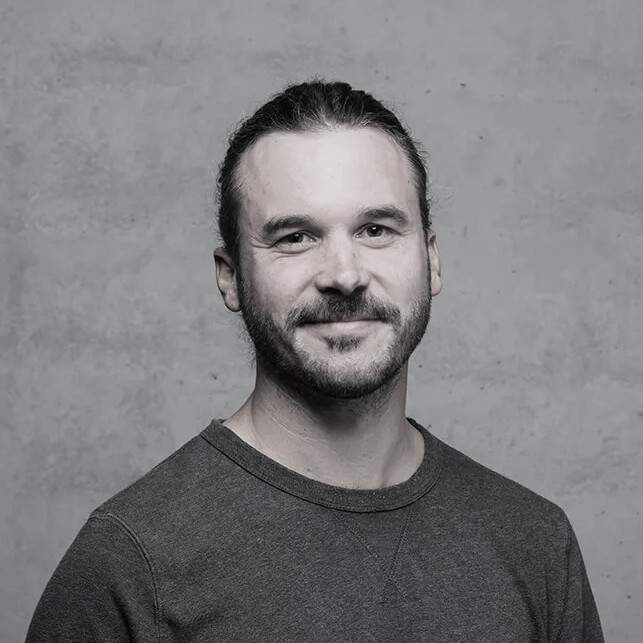
Arno Deutschbauer
Arno Deutschbauer has been strengthening the Ars Electronica Futurelab team as Researcher & Artist since 2019. He studied Multimedia Art at the University of Applied Sciences in Salzburg and Interface Cultures at the University of Art in Linz. During his studies he was mainly concerned with the performative audiovisual area on different platforms.
In the context of his master’s thesis he theoretically dealt with the topic of the Cartesian body/mind separation in virtual space as well as with related sub-areas around the topic of technocultural developments. This led to a further artistic project, together with Sound:Frame and 101, titled Afterlife, which dealt with the implementation of meditative contemplation in VR. This work has been exhibited in Austria, Lithuania and also at the ISEA in North Korea in 2019.
Arno’s hobby of music production and film scoring as a sound designer and hobby musician, which has been passionately pursued since his youth, was thus linked during his studies with generative visual design up to the field of reactive audiovisual VR development.
